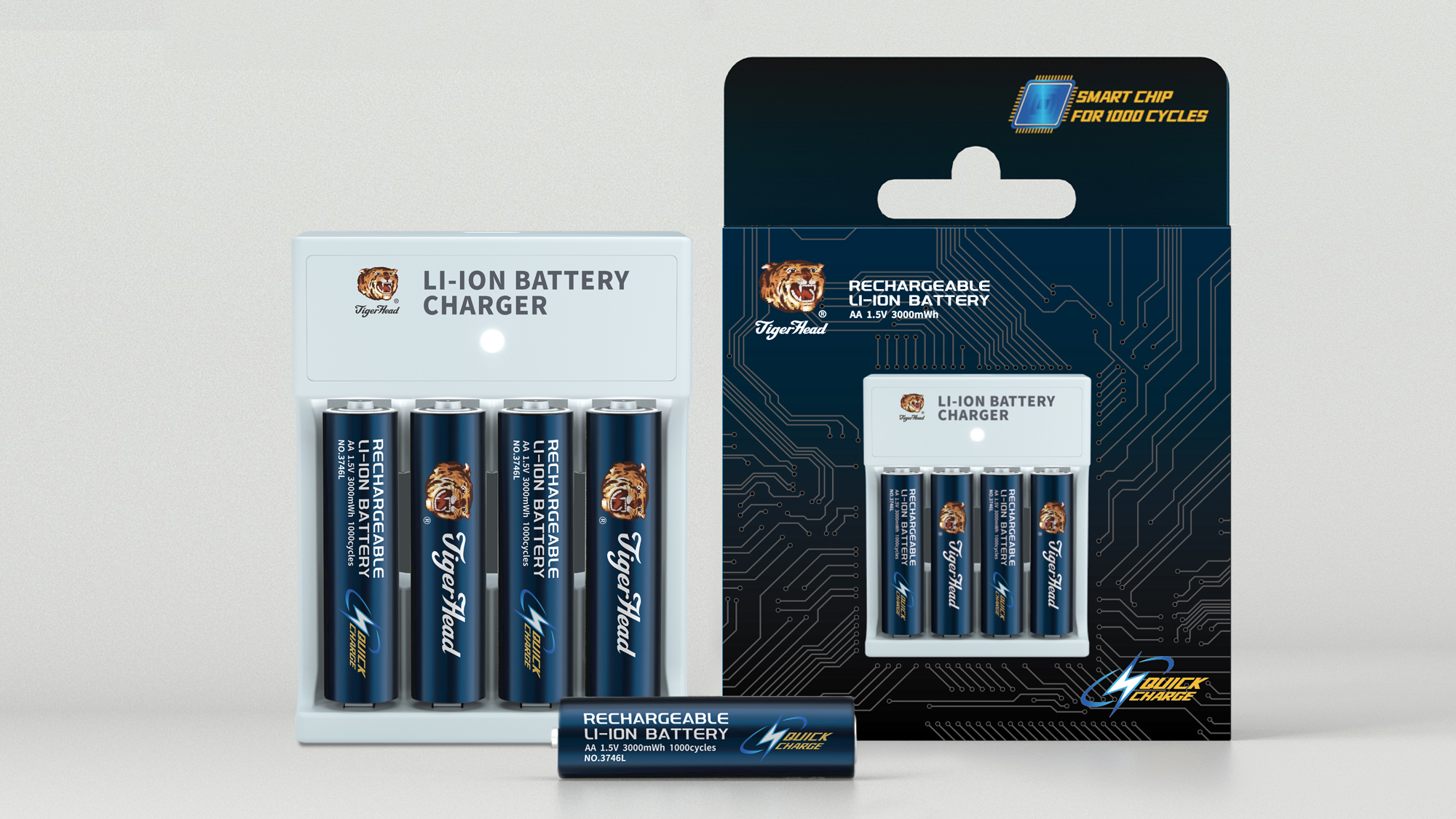Principle of 1.5v rechargeable li-ion battery.
The 1.5v rechargeable li-ion battery has high energy density, low self-discharge rate, no memory effect and no pollution to the environment, and its performance is superior to other energy storage battery types in all aspects.
The 1.5v rechargeable li-ion battery is generally composed of five parts: cathode material, anode material, separator, electrolyte, battery case, etc. The 1.5v rechargeable li-ion battery is a type of rechargeable battery, which mainly relies on the movement of lithium ions between the cathode and the anode to work. In the process of charging and discharging, the lithium-ion battery intercalates and deintercalates back and forth between the two electrodes. When charging, it deintercalates from the cathode, and then enters the anode when passing through the electrolyte. And the anode is in a lithium-rich state. When discharging, it is the opposite process.

On the one hand, the charging principle of the 1.5v rechargeable li-ion battery.
When the 1.5v rechargeable li-ion battery is charged, the lithium atoms of the cathode ionize into positively charged lithium ions and leave. Positively charged lithium ions start from the cathode, pass through the thickness of the film to the anode, and synthesize lithium atoms with electrons in the anode. The carbon as the anode has a layered structure. It has many micropores. When the lithium ions reach the anode, they will be inserted into the micropores of the carbon layer. The more lithium ions are inserted, the higher the charging capacity.
On the other hand, the discharge principle of the 1.5v rechargeable li-ion battery.
In the same way, when the 1.5v rechargeable li-ion battery is discharged, the lithium ions embedded in the carbon layer of the anode are released and move back to the cathode. When the more lithium ions return to the cathode, the higher the discharge capacity. What we usually call battery capacity refers to the discharge capacity.






